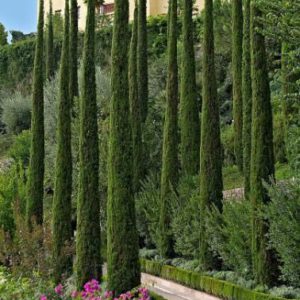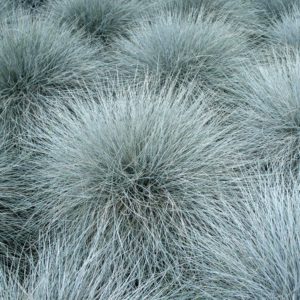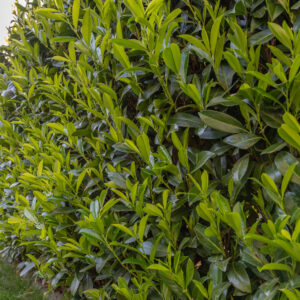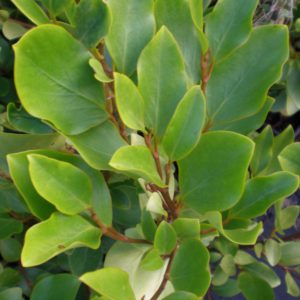Ilex Blue Princess Hedging
Price range: €350.00 through €550.00
Frequently Bought Together


Description
Quick Facts
- Common Name: Blue Princess Holly, Blue Holly
- Botanical Name: Ilex × meserveae ‘Blue Princess’
- Plant Type: Evergreen shrub
- Mature Height: 2.5-4m
- Mature Spread: 2-3m
- Flowering Period: May to June
- Flower Colour: Small white flowers
- Foliage: Glossy dark green leaves with blue-purple tints and spiny edges, red berries in autumn/winter
- Hardiness: RHS H6 (hardy)
- Soil Requirements: Moist, well-drained, acidic to neutral
- Aspect: Full sun to partial shade
- Maintenance: Low to moderate
Description
Experience the exceptional beauty of Ilex × meserveae ‘Blue Princess’, the stunning Blue Princess Holly that brings year-round colour, spectacular winter berries, and elegant evergreen structure to gardens with its distinctive blue-tinted foliage and abundant red fruits. This outstanding evergreen shrub offers remarkable qualities—glossy dark green leaves with distinctive blue-purple tints and red stems creating unique colour and year-round interest, abundant bright red berries that appear in autumn and persist throughout winter providing spectacular displays and valuable food for birds, compact pyramidal form with dense branching creating excellent structure and screening, and exceptional hardiness tolerating cold temperatures, exposure, and challenging conditions making this one of the most reliable berry-producing hollies, making this one of the finest choices for creating winter interest, wildlife value, and elegant evergreen presence in gardens.
Throughout the year, this captivating shrub displays its characteristic glossy leaves measuring 4-7cm long with spiny serrated edges in dark green with distinctive blue-purple tints, especially on young growth and stems, creating unique colour that sets this apart from common green hollies. The leaves are held on purplish-red stems that add to the overall colour effect. The overall appearance is elegant and architectural. In late spring to early summer (May-June), the shrub produces small white flowers measuring 5-8mm across that appear in clusters along the stems. The flowers are modest but provide important nectar for pollinoes. But the shrub’s crowning glory appears in autumn and persists throughout winter—masses of bright red berries measuring 8-10mm diameter that cluster along the branches creating spectacular displays. The berries are abundant and reliable, appearing in profusion on mature plants and creating stunning contrast against the dark blue-green foliage and winter landscapes. The berries persist well into winter, providing colour when little else is flowering and offering valuable food for birds. IMPORTANT: ‘Blue Princess’ is a female cultivar that requires a male pollinator (such as ‘Blue Prince’ or ‘Blue Stallion’) planted nearby to produce berries—without a male, no berries will form.
This popular cultivar is part of the Ilex × meserveae group, hybrids developed by Mrs. Kathleen Meserve in New York in the 1950s-60s by crossing Ilex rugosa (a hardy Asian species) with Ilex aquifolium (English Holly). The goal was to create hollies with the beauty of English Holly but with greater cold hardiness. ‘Blue Princess’ was introduced in 1972 and has become one of the most popular berry-producing hollies. The distinctive blue-purple tints come from the I. rugosa parentage. Hardy and adaptable, this holly thrives in our temperate Irish climate, tolerating cold winters, exposure, urban pollution, and coastal conditions. Prefers acidic to neutral soil and consistent moisture. Moderate growth rate, establishing within 5-7 years and producing reliable berry displays once mature (typically from 3-4 years old). The compact size makes this ideal for small to medium gardens.
Create stunning compositions by planting as spectacular specimen shrubs in mixed borders, foundation plantings, or prominent positions where the blue-tinted foliage and abundant red winter berries can be fully appreciated. Exceptional in winter gardens where the berries provide vital colour, wildlife gardens where the berries feed birds and flowers provide nectar, or formal gardens where the pyramidal form creates structure. Works beautifully planted in groups or hedges for enhanced berry displays and screening. Magnificent underplanted with winter-flowering hellebores, snowdrops, or evergreen groundcovers that complement the berries. CRITICAL: Plant with a male pollinator (such as ‘Blue Prince’) within 15m—one male can pollinate multiple females. Perfect for creating winter interest, wildlife value, and year-round evergreen beauty.
Caragh Garden Notebook
Planting: Space shrubs 2-3m apart for hedging or screening, or allow 3-4m for specimen placement to accommodate the mature spread. CRITICAL: Plant at least one male pollinator (such as Ilex × meserveae ‘Blue Prince’ or ‘Blue Stallion’) within 15m of female plants—one male can pollinate 3-5 females. Without a male pollinator, no berries will form. Plant container-grown specimens year-round, though autumn or early spring is ideal. Dig holes twice the width of the root ball and incorporate ericaceous compost or organic matter. Plant at the same depth as the container. Water thoroughly and mulch with acidic mulch (pine bark, composted pine needles). Choose positions in full sun to partial shade—full sun produces best berry displays.
Soil Preparation: Thrives in moist, well-drained soil with pH 5.0-6.5. Prefers acidic to neutral conditions—dislikes alkaline or chalky soils which can cause chlorosis (yellowing leaves). Requires deep, moisture-retentive, fertile conditions enriched with ericaceous compost or organic matter. Dislikes waterlogged or very dry soils. Best growth and berry production occur in full sun to partial shade with consistent moisture, shelter from harsh winds, and acidic to neutral soil. Mulch to retain moisture and maintain acidity.
Container Growing: Can be grown successfully in large containers (minimum 50cm diameter) using ericaceous compost, creating spectacular patio features with blue-tinted foliage and winter berries. Water with rainwater if possible (avoid hard tap water in alkaline areas). Feed in spring with ericaceous fertiliser. REMEMBER: Must have a male pollinator nearby (within 15m) for berry production—consider planting a male in a nearby container. However, for best long-term health and maximum berry displays, planting in the ground where roots can establish fully is ideal.
Seasonal Care: Prune lightly in late spring (May-June) after flowering if shaping is needed—hollies tolerate pruning well and can be clipped into formal shapes or hedges. Avoid heavy pruning in autumn/winter as this removes berry-bearing stems. Remove only dead or damaged growth as needed. Can be trimmed annually to maintain size and shape. Apply slow-release ericaceous fertiliser in early spring. Mulch annually with acidic organic matter (pine bark, composted pine needles, leaf mould). Water during dry spells, especially in the first 3-5 years until established—consistent moisture improves berry production. Generally pest and disease resistant. Very low maintenance once established.
Propagation: Cannot be grown reliably from seed as this is a hybrid cultivar that will not come true from seed. Professional propagation is by semi-hardwood cuttings in late summer to autumn with rooting hormone—success rate is moderate. Layering can be attempted on low branches. Home gardeners should purchase nursery-grown specimens for guaranteed quality, reliable blue-tinted foliage, and confirmed female sex for berry production. CRITICAL: Always purchase and plant a male pollinator at the same time.
This stunning beauty is absolutely spectacular—one of the most reliable berry-producing hollies available! Those abundant bright red berries persisting throughout winter create breathtaking displays and feed birds beautifully. The glossy dark green leaves with distinctive blue-purple tints are so elegant and unique—that blue colouring sets this apart from ordinary hollies. Compact pyramidal form, exceptionally hardy, tolerates cold and exposure brilliantly. CRITICAL: Must plant with a male pollinator like ‘Blue Prince’ within 15m—no male means no berries! Remember to use ericaceous compost and acidic mulch. Perfect for winter interest, wildlife gardens, and year-round evergreen structure. Pure winter magic with those spectacular red berries!





